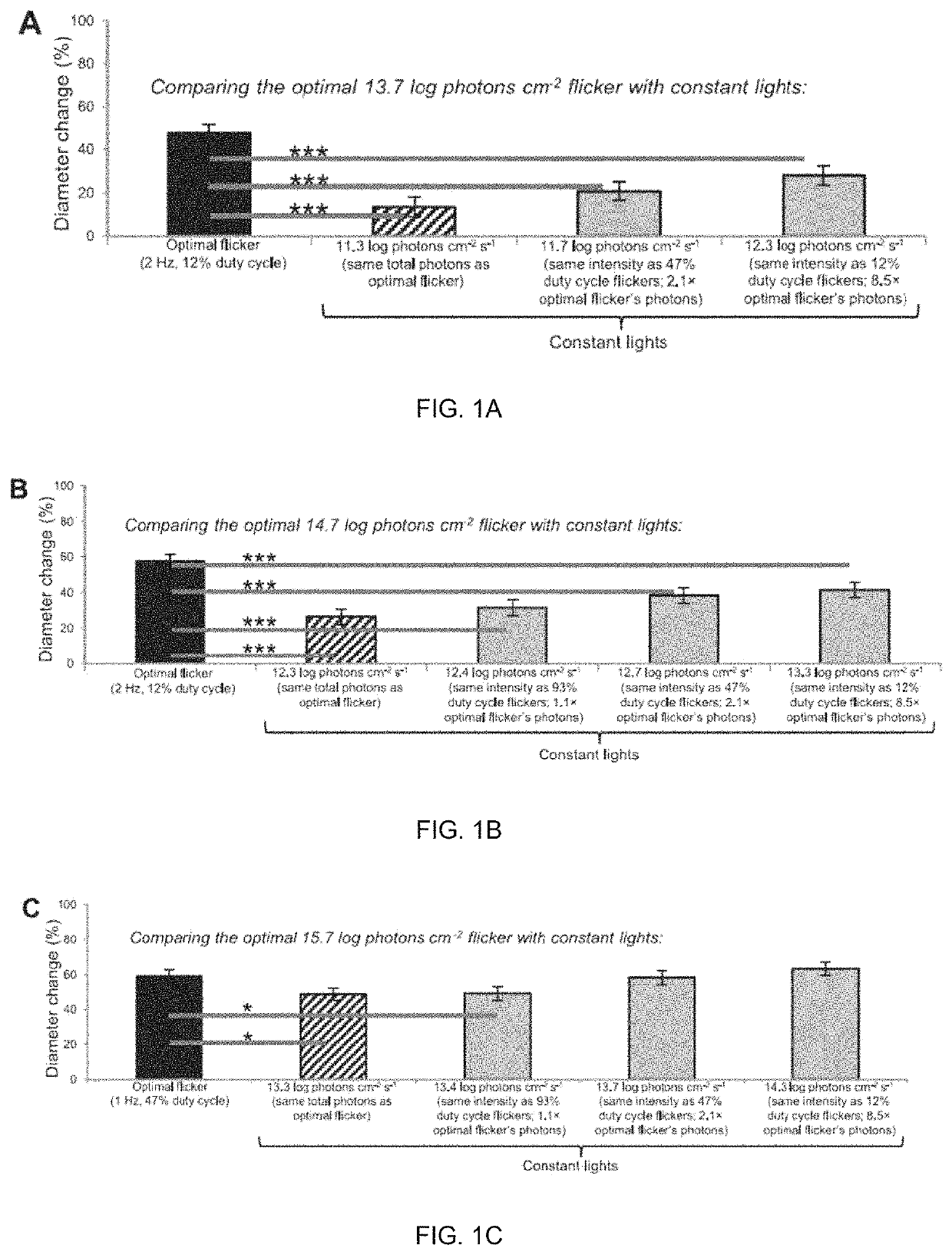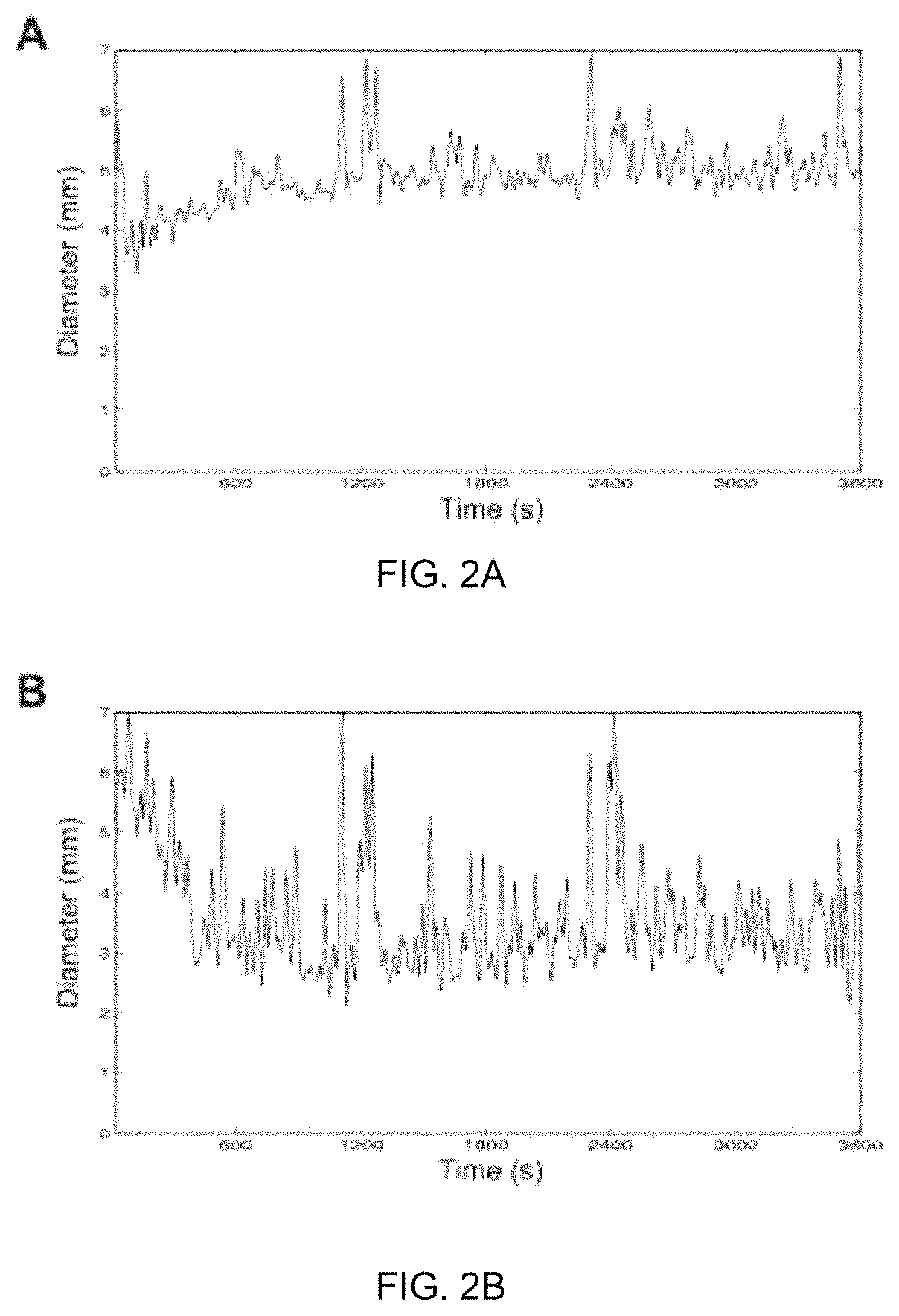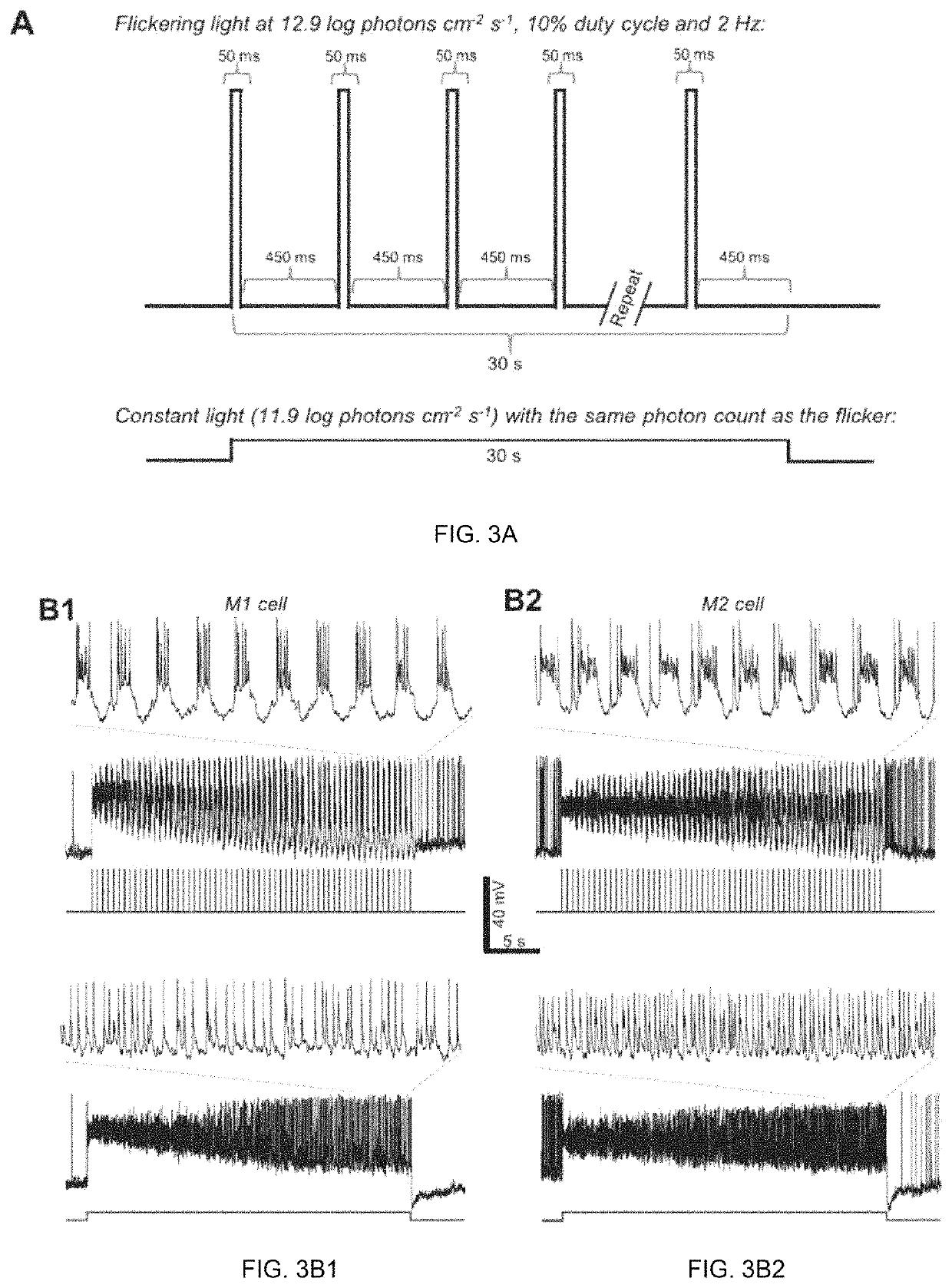Temporally modulated multi-LED for enhanced subconscious physiological responses
a physiological response and multi-led technology, applied in the field oftemporally modulated multi-led for enhanced subconscious physiological responses, can solve the problems of jet lag symptoms, discomfort, and jet lag symptoms, and achieve the effect of reducing photoreceptor adaptation and stronger non-image-forming responses
- Summary
- Abstract
- Description
- Claims
- Application Information
AI Technical Summary
Benefits of technology
Problems solved by technology
Method used
Image
Examples
Embodiment Construction
[0029]A detailed description of each of the figures and tables is provided first below, followed by a more general discussion of the relevant disclosure of this application. FIGS. 1-4 summarize empirical evidence that temporally flickering light stimulates ipRGCs more strongly than steady light. FIGS. 1A-C provide comparisons of human pupillary responses to flickering versus steady lights. The black columns illustrate optimal flicker responses at three photon counts: 13.7 log photons cm−2 (FIG. 1A), 14.7 log photons cm−2 (FIG. 1B), and 15.7 log photons cm−2 (FIG. 1C). These flicker responses are compared with responses to steady lights that have either the same photon counts as the optimal flickers (hashed columns) or higher photon counts (gray columns). *P<0.05. ***P<0.001. Five subjects participated, each contributing two trials to all 14 conditions.
[0030]FIGS. 2A-B illustrate responses to prolonged photostimulation. After 60 minutes of dark adaptation, a subject was exposed to 60...
PUM
 Login to View More
Login to View More Abstract
Description
Claims
Application Information
 Login to View More
Login to View More - R&D
- Intellectual Property
- Life Sciences
- Materials
- Tech Scout
- Unparalleled Data Quality
- Higher Quality Content
- 60% Fewer Hallucinations
Browse by: Latest US Patents, China's latest patents, Technical Efficacy Thesaurus, Application Domain, Technology Topic, Popular Technical Reports.
© 2025 PatSnap. All rights reserved.Legal|Privacy policy|Modern Slavery Act Transparency Statement|Sitemap|About US| Contact US: help@patsnap.com



